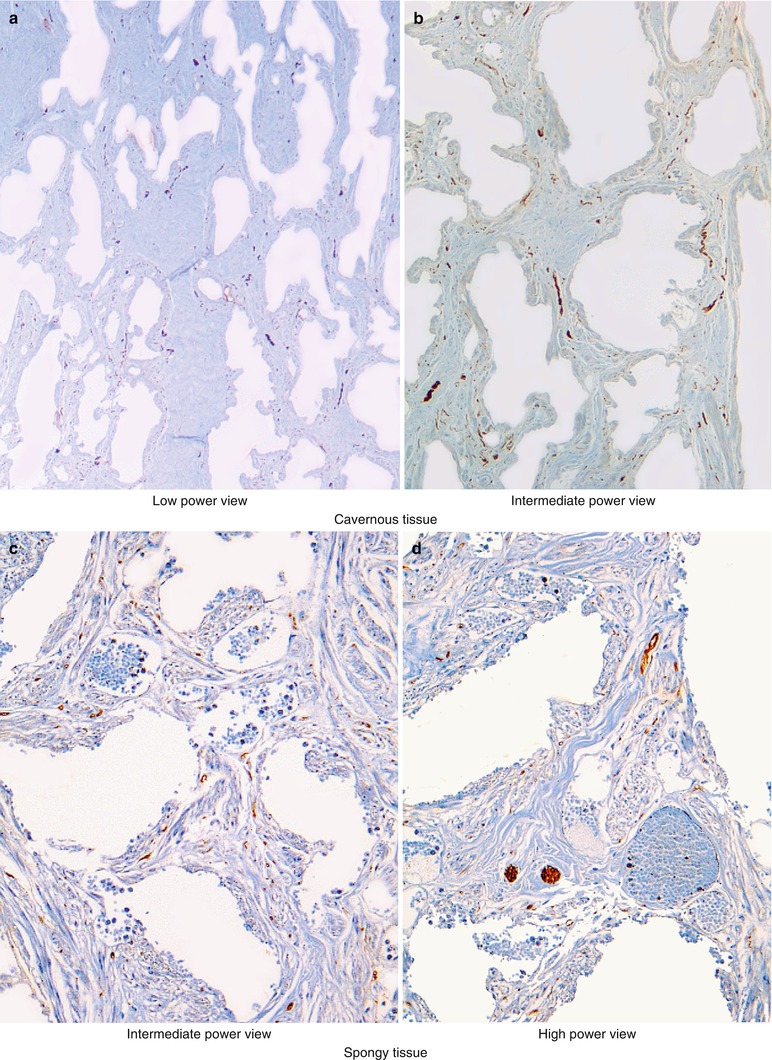and Hubert Lepidi1
(1)
UER Médecine, Aix-Marseille Université, Marseille, France
Abstract
The adjective does not apply to the two types of tissue in the same manner.
7.1 Their Role in the Erection of the Clitoris
7.1.1 Can These Tissues Be Referred to as “Erectile Tissues”?
The adjective does not apply to the two types of tissue in the same manner.
The spongy tissue has no actual erection capacity (this is all the more obvious compared to the male penis in men). Such as we have just observed, this tissue can be saturated with blood and become tumescent. However, due to the absence of any true albuginea, the thinness and the actual structure of the fibrous envelope, which is not constant (it is only present at the level of the bulbs), and especially to the absence of any sub-albugineal venous network, a blocked blood evacuation or a backpressure, such as can be observed at the level of the corpora cavernosa, is not possible.
This does not apply to the tissue of the corpora cavernosa where all parts are organised such as to make an erection possible: presence of a thick, extremely resistant and double-layered albuginea, presence of a considerably developed sub-albugineal venous network (Fig. 6.4), vascular network with significantly anastomosed sinus. The tissue of the clitoral corpora cavernosa is precisely therefore an erectile tissue and, as a result, there is no doubt concerning the fact that the clitoris has an erection capacity.
This capacity has, however, often been denied, even by eminent specialists, who have referred to the absence of any sub-albugineal venous network (which is completely inaccurate), to the fixity of the clitoral curve related to the presence of the suspensory ligament (but this is forgetting that this connection only really concerns the area of the angle), to the reduced dimensions of the corpora cavernosa and to the fact that these corpora cavernosa do not reach the end of the glans (which, however, corresponds to the same configuration as in the penis). Others, such as Pernkopf in 1943, acknowledged the erectile capacity, while adding that it was an “ineffective erection”. Kobelt, whose remarkable work concerning the clitoris has already been mentioned in this study, strongly supported the idea (as from 1844) that the clitoris could enter into erection during the phase of sexual excitation. It is quite certain that, considering the dimensions of the clitoris, this erection remains discrete and limited, resulting however in a slight straightening of the descending portion, an increase in the size of the crura and clitoral body, a rigidity of the descending portion of the body and an extrusion of the glans outside the hood.1
7.1.2 Physiology of the Erection of the Clitoris
7.1.2.1 The Biochemical Cascade
This biochemical cascade is well known thanks to the remarkable work completed during recent years by pharmacologists and biochemists, who were searching for new drugs capable of treating cases of male impotence (Bennett AH.).
The process only starts when the phase of sexual excitation occurs, whether this phase is caused by mechanical stimulation (masturbation or other), erogenic stimulation (visual, auditive or other) or during sexual intercourse. This process involves the autonomic nerve endings of the trabecular structures and their capillaries (Fig. 7.1).










